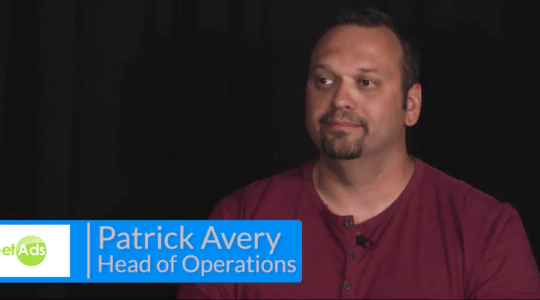
Photo by Glenn Carstens-Peters on Unsplash
There’s no better time to freak out about a future partner marketing strategy than the present. Don’t sweat. We’re here to help.
In this blog post, we’ll give you the tools you need to ensure that all of your performance partnerships are set up for success.
▢ Set Clear, Achievable Goals
As affiliate marketing continues to grow in popularity, many advertisers have watched their partner marketing programs become their top channel, outpacing even display advertising and paid reviews. The clearer you are on your affiliate KPIs or influencer milestones, the easier it will be to design your partner marketing strategy and measure its success.
Goals to consider include:
- Short-term or long-term: Are you building a partner marketing strategy for an upcoming product launch (a one-off or short-term approach), or for ongoing customer acquisition and sales? Knowing whether your goal lies six months or six years down the road is key.
- Target customer: Who is the ideal customer in your partner program? Are you attempting to get new customers, or re-engage old ones? Are you trying to attract customers away from a competitor, find them from a new source, or improve conversion with an audience you have targeted for a while?
- Specific outcome: What would you like your affiliates and campaigns to produce? Is it new sales, email subscribers, app downloads, or something else altogether?
If you’re brand new to affiliate marketing, this first section may seem overwhelming already. If that’s the case, see our related post, Partner Marketing 101: What Is Affiliate Marketing? for a comprehensive guide on everything you need to know to get ramped up. And if you’re starting your own program, be sure to check out our Ultimate Guide to Partner Marketing — it’s a step-by-step guide with everything you need to know to succeed.
▢ Craft the Perfect Partner Portfolio
After determining the goals for your program, begin brainstorming what your ideal partners look like. This will help you align your partner marketing strategies with your goals, and lead to the most effective portfolio for your business.
To find the right partners, first think about the demographics that make up your target audience: where your potential customers shop, what they read, which social media platforms they use, the types of products they buy, whether they are more likely to browse and buy on mobile or on desktop, and so on. Then, take this information and match it to any partners that fit the bill. (Yes, even if that partner is an affiliate named Kim Kardashian, and your budget is so not on her level.)
Once you’ve figured out an affiliate dream team, use their profiles as guidelines for building your perfect portfolio.
Keep in mind that a healthy mix of partners can minimize your potential risk. Don’t want all those eggs in one basket, after all. Consider selecting profiles that vary across social media platforms (Instagram, YouTube, Snapchat, etc.) and formats (video, native, blog, display, etc.) to diversify your program.
Even current customers can be part of your portfolio. Referral programs can bring incremental value to your business, but their effectiveness is dependent on the kind of product or service you provide. Also note that the way you interact with and reward your referral program members will differ from your partner marketing program. For a good example, check out Blue Apron or Thrive Market, which incentivize current customers to share referral links to drive new customers in exchange for discounts on future orders.
▢ Determine Payout Structure
Once you decide on your dream portfolio, you’ll want to determine what’s realistic to pay them based on your budget. Kim Kardashian might be your perfect marketing partner, for example, but she’s not going to be affordable for everyone. (And depending on your goals, she may not even be your best option.) So determine early on what kind of payout structure works best for your brand — and for your affiliates.
There are five main types of partner payouts:
- Cost per Action (CPA): Action essentially means conversion, whatever that may be (sale, download, registration, etc.). This is the most common payout method for offers.
- Cost per Sale (CPS): This is a set percentage of the total sale of a conversion.
- Cost per Conversion plus Cost per Sale: With this option, you are setting a flat payout amount as well as specifying a percentage of a sale amount on top of that. This is essentially a combination of the two above payout types.
- Cost per Click (CPC): Instead of paying out on conversion, you can also set a flat payout on click, and each unique click will receive a payout.
- Cost per Thousand Impressions (CPM): If you are interested in tracking impressions instead of clicks and conversions, this option is set to pay out for every 1,000 impressions.
Payouts can be made a variety of ways as well, from flat rates to dynamically tiered commissions. With the right platform, payouts can be as flexible as you are.
▢ Create Click-Worthy Content
Once you’ve determined your partner marketing strategy for portfolios and payouts, it’s a good idea to create a content marketing plan. Yes, you can leave it up to influencers and affiliates to promote your brand to their audience in a way they know will resonate. However, usually it’s useful to prepare resources ahead of time. You’ll want to put together content like swipe copy, banner ads, logos, images, and/or videos, depending on your chosen platforms.
You’ll also want to make sure your program looks presentable, reputable, and dependable from the affiliate’s point of view. Try out these 10 tips to find super affiliates to attract the best kinds of partners to your program.
▢ Plan to Keep Affiliates Engaged
Now that you’re prepared for your program, it’s time to go out and connect with your new partners. Some businesses reach out to specific influencers directly, while others turn to specialty affiliate networks to act as a liaison between the two sides of the performance relationship. Other companies leverage current customers as part of a referral program.
If your partner marketing strategy is based around a specific product or promotion, you can create an affiliate marketing calendar to train your partners on how to use your content and set schedules for when to promote it. If your strategy is more ongoing, make it easy for affiliates to find your content in their account or on your website, so they can quickly and regularly share with their networks.
Some brands even find it useful to hire an affiliate manager or an agency to handle their relationships, share new content and promotions, and provide other helpful information or services.
Whatever you decide, here’s an example of how to keep in touch: every month, send out a newsletter to your program that shares upcoming contests, coupons, and promotions. This can help to ensure your partners are always in the know about your brand, and can make it easier for them to come up with new marketing material for their followers.
In addition, chances are high that your partners will have questions about payouts, procedure, technology, and lots of other things. It’s a good idea to have one place for everyone to get everything they need, whether that’s a pure SaaS platform like TUNE, or an exclusive affiliate network, or something else entirely.
▢ Adopt the Mantra “Measure, Optimize, Repeat”
Once your partner marketing strategy is underway, it’s time to measure performance. Keep track of which affiliates perform best — either by new leads, customers, or both. Also note the platforms, time of day, locations, etc. that deliver the best results. The more you can drill into your performance data to fine-tune your program, the more return you will see for your money.
Remember: Successful partner programs don’t come together overnight. They are the result of a lot of tweaks, failures, and optimizations in content, relationship management, and measurement over time. And you can do this!
Your Best Partner Marketing Strategy Awaits
To learn more about building your best partner marketing strategy yet, download our Ultimate Guide to Partner Marketing. Then head on over to the TUNE blog to keep up with the latest news, insights, and advice on performance partnerships.
Questions? Drop us a line. We’re here to help you succeed!
This post was originally published in November 2018 and has been updated for accuracy and comprehensiveness.
Author
Becky is the Senior Content Marketing Manager at TUNE. Before TUNE, she handled content strategy and marketing communications at several tech startups in the Bay Area. Becky received her bachelor's degree in English from Wake Forest University. After a decade in San Francisco and Seattle, she has returned home to Charleston, SC, where you can find her strolling through Hampton Park with her pup and enjoying the simple things in life.




Leave a Reply
You must be logged in to post a comment.